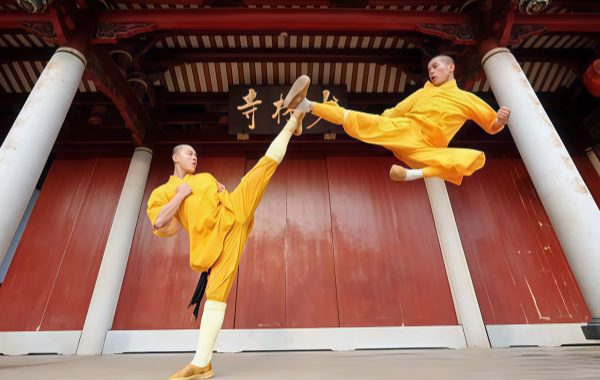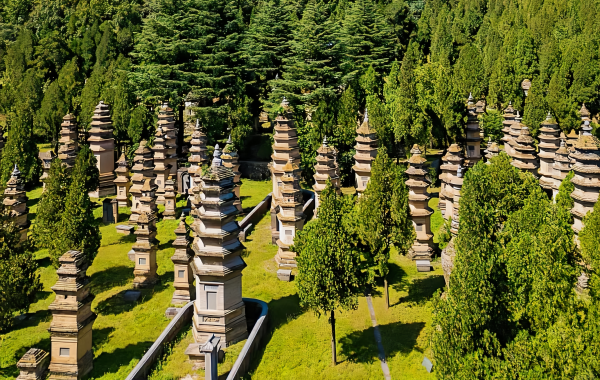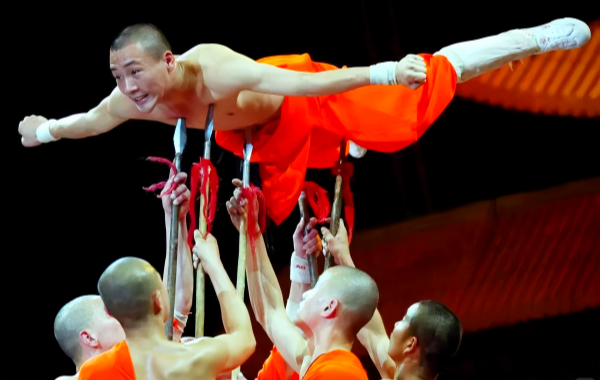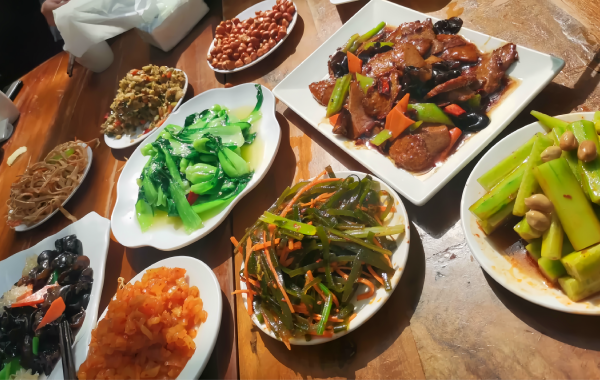
Shaolin KungFu
All Martial Arts Under Heaven Originate from Shaolin
 "All Martial Arts Under Heaven Originate from Shaolin" (天下武功出少林)
"All Martial Arts Under Heaven Originate from Shaolin" (天下武功出少林)
This famous Chinese saying reflects Shaolin’s unparalleled influence on global martial arts. For centuries, Shaolin has been regarded as the "Mecca of Kung Fu", where monks developed a system that blends physical training, spiritual discipline, and combat effectiveness. Its techniques have spread across Asia and beyond, shaping the foundations of many modern fighting styles.
 The Origin of Shaolin Kung Fu
The Origin of Shaolin Kung Fu
Shaolin Kung Fu traces its roots to Bodhidharma (Dámó), an Indian Buddhist monk who arrived at the Shaolin Temple around 527 CE. Finding the monks weak from prolonged meditation, he introduced a series of 18 exercises (十八罗汉手 / Shíbā Luóhàn Shǒu) to strengthen their bodies and minds. Over time, these exercises evolved into a sophisticated martial art, incorporating:
· Buddhist teachings (non-violence, self-discipline)
· Chinese traditional medicine (meridian theory, Qi circulation)
· Natural movements (mimicking animals like the tiger, crane, and snake)
By the Tang Dynasty (618–907 CE), Shaolin monks had become renowned warriors, defending the temple and aiding emperors in battle, solidifying their legendary status.
 Shaolin-Related Mountains, Sites & Architecture
Shaolin-Related Mountains, Sites & Architecture
Primary Location: Songshan Mountain (嵩山 / Sōngshān)
· Shaolin Temple (少林寺 / Shàolín Sì) – The birthplace of Shaolin Kung Fu, founded in 495 CE.
· Damo Cave (达摩洞 / Dámó Dòng) – Where Bodhidharma meditated for nine years.
· Pagoda Forest (塔林 / Tǎlín) – A cemetery of over 240 stone pagodas for revered monks.

· Shaolin Martial Arts Academy (少林武术馆 / Shàolín Wǔshù Guǎn) – Modern training center for international students.
Other Sacred Sites
· Wuru Peak (五乳峰 / Wǔrǔ Fēng) – The highest peak where monks train in isolation.
· Sanhuang Cliff (三皇寨 / Sānhuáng Zhài) – A natural fortress used for advanced martial arts training.
 The Legendary 72 Shaolin Absolute Skills
The Legendary 72 Shaolin Absolute Skills
少林七十二绝技 / Shàolín Qīshí'èr Juéjì
The 72 Advanced Skills are divided into hard (external) and soft (internal) techniques, requiring decades of mastery. Some of the most famous include:
|
Category |
Skills |
|
Striking |
Iron Palm (铁砂掌 / Tiěshā Zhǎng), One-Finger Zen (一指禅 / Yīzhǐ Chán) |
|
Kicking |
Shadowless Kick (无影脚 / Wúyǐng Jiǎo), Flying Leg (飞腿 / Fēi Tuǐ) |
|
Grappling |
Dragon Claw Hand (龙爪手 / Lóngzhǎo Shǒu), Tiger Crane Double Form (虎鹤双形 / Hǔhè Shuāngxíng) |
|
Weaponry |
Shaolin Staff (少林棍 / Shàolín Gùn), Saber (刀 / Dāo), Spear (枪 / Qiāng) |
|
Internal Qi |
Golden Bell Cover (金钟罩 / Jīnzhōng Zhào), Iron Shirt (铁布衫 / Tiěbùshān) |
|
Acrobatics |
Light Body Skill (轻功 / Qīnggōng), Wall Walking (飞檐走壁 / Fēiyán Zǒubì) |

 Training Methods & Progression Levels
Training Methods & Progression Levels
Training Regimen
· Basic Training (基础训练 / Jīchǔ Xùnliàn) – Stances, punches, kicks, flexibility, and endurance.
· Form Practice (套路训练 / Tàolù Xùnliàn) – Learning predefined sequences (e.g., Five Animals Fist).
· Weapon Mastery (兵器训练 / Bīngqì Xùnliàn) – Staff, saber, spear, and more.
· Qi Gong & Meditation (气功与冥想 / Qìgōng Yǔ Míngxiǎng) – Cultivating inner energy for strength and healing.
· Sparring & Combat (实战训练 / Shízhàn Xùnliàn) – Applying techniques in controlled fights.
Progression Levels
1. Novice (入门 / Rùmén) – Basic stances and forms (1–3 years).
2. Disciple (弟子 / Dìzǐ) – Advanced weaponry and Qi Gong (3–10 years).
3. Master (大师 / Dàshī) – Mastery of multiple skills (10–30 years).
4. Grandmaster (宗师 / Zōngshī) – Rare achievement, embodying perfect mind-body-spirit unity.
 Shaolin in Martial Arts Fiction & Pop Culture
Shaolin in Martial Arts Fiction & Pop Culture
Shaolin has been immortalized in countless Wuxia novels, films, and TV shows, including:
· "Shaolin Temple" (1982 film) – Starring Jet Li, introducing Shaolin to the world.
· "Kung Fu Panda" series – Features Tigress, inspired by Shaolin tiger-style martial arts.
· "Mortal Kombat" – The character Liu Kang is based on Shaolin monks.
· "The 36th Chamber of Shaolin" (1978) – A cult classic showcasing rigorous training.
 Shaolin Diet & Traditional Arts
Shaolin Diet & Traditional Arts
Dietary Principles
· Vegetarianism (素食 / Sùshí) – Monks follow Buddhist principles, avoiding meat.

· Herbal Medicine (中药 / Zhōngyào) – Uses ginseng, goji berries, and other herbs for energy.
· Tea Culture (茶道 / Chádào) – Drinking Pu-erh tea for detoxification and focus.
Traditional Arts
· Shaolin Calligraphy (少林书法 / Shàolín Shūfǎ) – Combining martial arts movements with brush strokes.
· Lion Dance (舞狮 / Wǔshī) – Performed during festivals to ward off evil spirits.
 Legendary Shaolin Masters
Legendary Shaolin Masters
· Bodhidharma (达摩 / Dámó) – Founder of Shaolin Kung Fu.
· Jueyuan (觉远 / Juéyuǎn) – 13th-century master who systematized the 72 skills.
· Hong Xiquan (洪熙官 / Hóng Xīguān) – Founder of Hung Gar Kung Fu, influenced by Shaolin.
· Shi Yanzi (释延孜) – Modern grandmaster and champion of Shaolin culture.
Conclusion
Shaolin Kung Fu is not just a martial art—it is a living tradition that embodies China’s spiritual, philosophical, and physical heritage. From its humble beginnings in a Buddhist temple to its global influence today, Shaolin remains a symbol of discipline, strength, and inner peace. Whether through rigorous training, ancient wisdom, or cultural legacy, the spirit of Shaolin continues to inspire generations worldwide.
"Shaolin is not a place—it is a state of mind."
What Our Clients Say?
Based on 10,000+ traveler reviews













